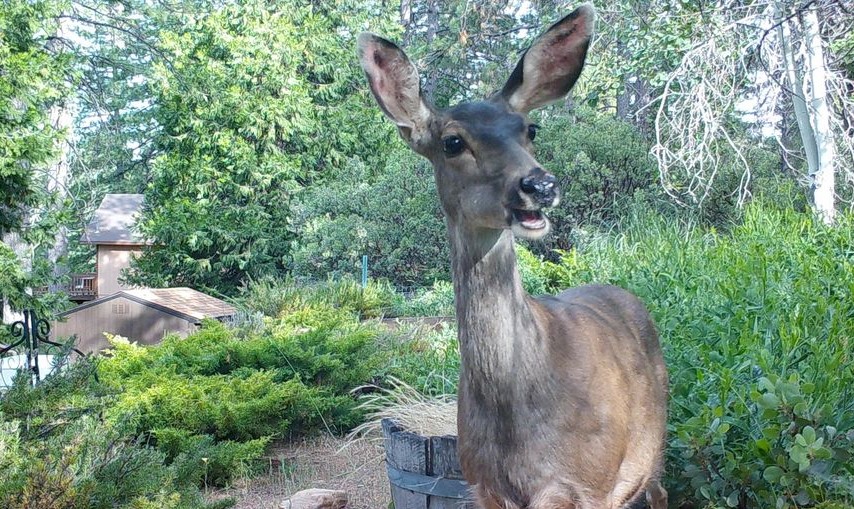I tend to discuss the black bears more, but my most frequent visitors are deer. Deer appear to be such gentle and beautiful creatures, and some of my best photos are of deer. The deer in our area are daily travelers on the game trails. I may not talk about the deer as much, but I love them too! There was one male that I created a sort of bond with, and I called him “my baby boy.”
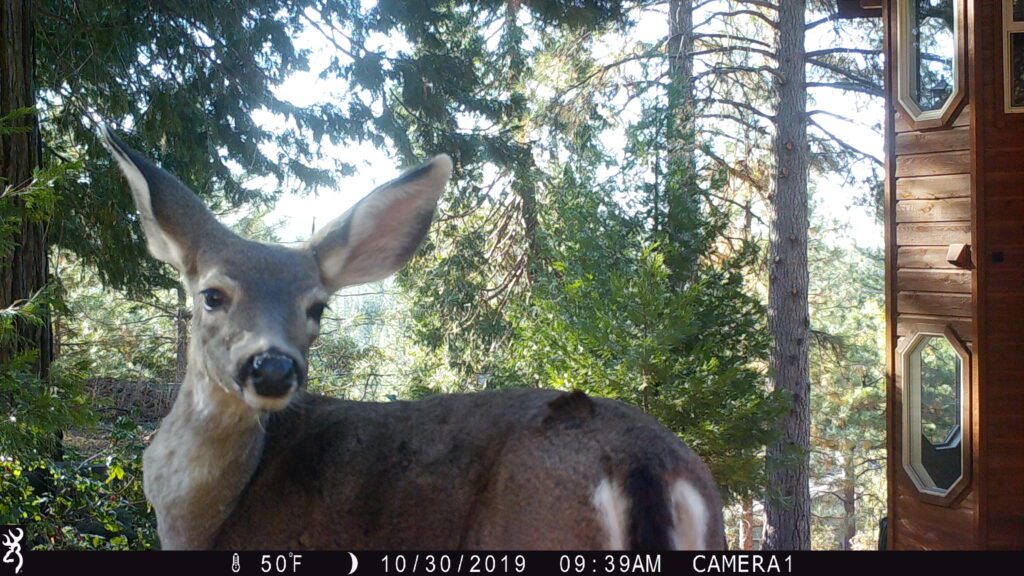
Our deer are black-tailed mule deer. There are two species, the Mule deer and the black-tailed deer. They are collectively known as Mule Deer because of their uniquely large ears, which resemble those of a mule. The mule deer is the most common type of deer in California. There are six different types of mule deer, and they live in other parts of California.
- California mule deer
- Desert mule deer
- Southern mule deer
- Rocky Mountain mule deer
- Inyo mule deer
- Columbian black-tailed deer
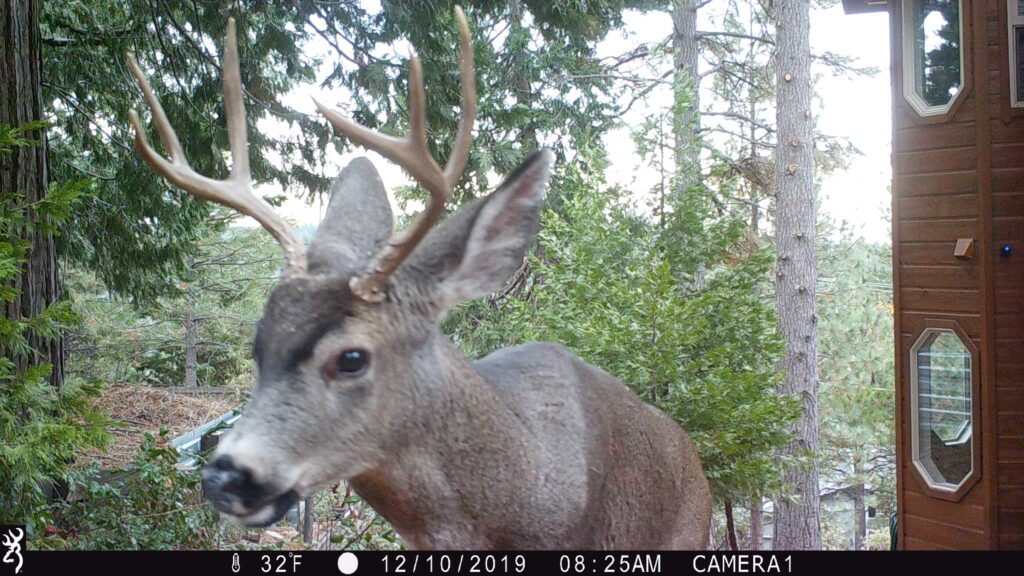

Mule deer are an essential part of California’s ecosystem and play a vital role in the state’s wildlife. They provide food for predators, help to disperse seeds, and their grazing helps keep vegetation in check. Unfortunately, mule deer are popular game animals hunted for sport and recreation. No hunting is allowed on my property, only photography! Although they are not endangered, mule deer populations have declined recently due to habitat loss and fragmentation, predation, disease, and vehicle collisions. However, with proper management and conservation efforts, mule deer populations can be stabilized or even increased.
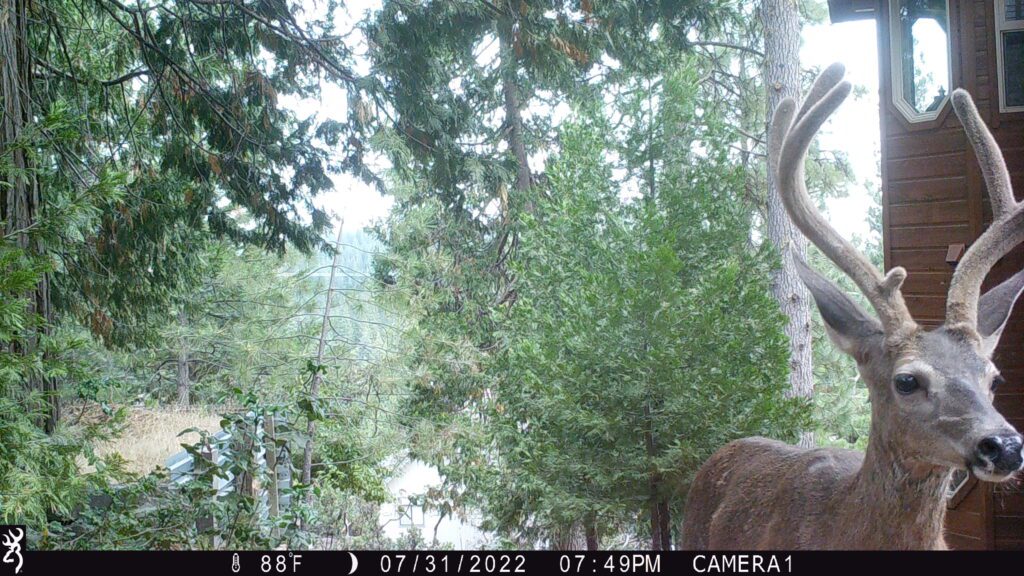
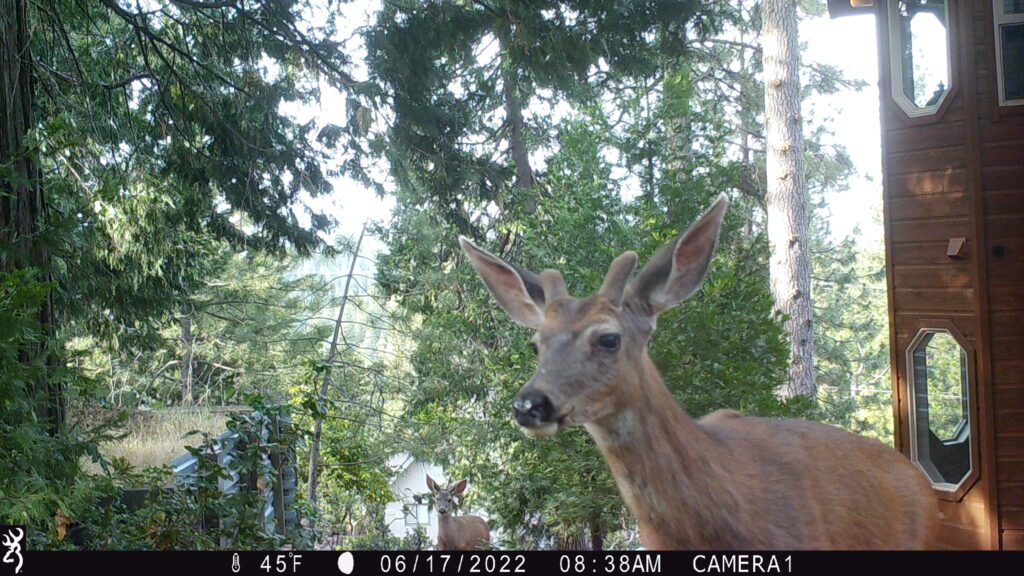
The mule deer population has recently diminished in the mountainous areas around Arnold, CA, because of many different things, as I mentioned in the earlier paragraph, like fewer places to live, getting sick, or being hit by cars. But we can help make things better for the mule deer if we try. So here are some things we can do:
- Be careful when driving to prevent hitting any deer.
- Help keep their habitats healthy by planting trees and shrubs and not cutting down too many trees.
Note: wherever you are, please follow your Fire Safety Guidelines concerning vegetation around your house. Wildfires are always a potential danger for my property in Arnold, California. So that is another consideration my husband and I need to consider before planting plants.
- Protect water sources: Conserve vegetation around water sources and protect them from runoff.


You can help conserve and protect mule deer populations by supporting local organizations working to protect their habitat. You can also reduce your impact on their habitat by being careful not to disturb their natural environment when you’re out hiking or camping. Finally, you can help raise awareness about the importance of conserving mule deer populations by sharing this information with your friends and family.
Do you have any questions about black-tailed mule deer? Share your thoughts in the comments below!
© 2019 I Don’t Know All The Answers, Nikki Mastro
All of my photographs are Copyrighted.

